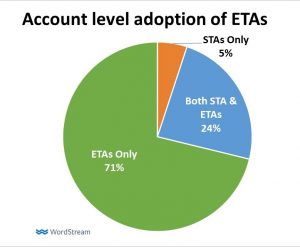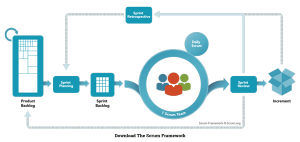In an increasingly multi-channel world, it’s difficult to make every customer interaction meaningful. Columnist Mike Sands explains the secret to driving more genuine engagements that foster retention and loyalty.
 Do your marketing programs encourage customers to regularly log in to the brand website or app? Or make use of CRM (customer relationship management) or loyalty membership data to capture known-customer behavior offline? Are you collecting behavioral data across web, mobile app and physical-world touch points?
Do your marketing programs encourage customers to regularly log in to the brand website or app? Or make use of CRM (customer relationship management) or loyalty membership data to capture known-customer behavior offline? Are you collecting behavioral data across web, mobile app and physical-world touch points?
If so, then you have a powerful foundation for fueling genuine 1:1 engagements at the right time and place in a buyer’s journey, an absolute must in today’s experience economy.
So, what’s holding you back?
For many brands, it’s the inability to connect all that rich data across platforms. This is a common challenge for marketers who want to get closer to their customers by providing meaningful, personalized experiences.
Perhaps the biggest barrier to this kind of marketing is tying the data back to the customer at the individual level — and doing so on a continuous basis, as new behavioral data is collected.
It’s a gap that most brands have yet to close. But their customers certainly expect them to. While 81 percent of brands claim to have a holistic understanding of customers across interactions and channels, only 37 percent of consumers believe their favorite retailer, for instance, understands them enough to personalize their experiences.
Sure, many marketers already onboard their offline customer data with ad tech vendors. But onboarding — connecting CRM or other offline data with digital customer data — is not enough. Typically, it’s treated as a one-off process focused around a marketing campaign rather than on the ever-evolving needs and wants of the customer.
Modern consumers, by contrast, desire brand experiences that are connected and contextually relevant at every point — and touch point — in their buying journeys. Recognizing the customer on a continuous basis can be a tall order in our multi-channel, multi-device environment. But it’s the reason that popular brands like Amazon, Uber and Apple are so successful.
Without the ability to continually resolve customer identity and process new behavioral data with each brand interaction, it’s impossible for brands to deliver 1:1 experiences that are personalized on the fly.
Five barriers
For most marketers, there are five obstacles to achieving this objective:
- Time lag in data processing. Onboarding and batch processing of customer data can be cumbersome. The brand can’t respond to customer signals in time, so marketers can miss critical moments to engage and provide real value to the customer.
- Short-lived customer profiles. When cross-channel data is matched and unified at the customer level, the resulting profiles can be activated for addressable ad targeting, personalization and more. But when profiles are compiled and used for only a single campaign, the benefit of that knowledge disappears when the campaign is over.
- Fragmented customer profiles. Accurate targeting and customization of messaging requires robust profiles that offer a complete view of customer identifiers, attributes and historical behavior. When any of these elements, such as attribute data, are missing, efficiency and relevancy are sacrificed.
- Rented identity graphs. If you’re using a vendor’s ID graph to resolve customer identity, you can’t activate a customer profile where, when and how you want. It isn’t portable across all of your marketing partners and platforms. Therefore, you can’t optimize the customer experience across your owned and paid channels.
- Incomplete analytics. Often, brands are limited to their partners’ analysis tools and the partial insights they can uncover. When marketers are blind to the full spectrum of user-level data, a brand can’t possibly connect what happens inside third-party ecosystems with the rest of its marketing efforts. And that makes analytics and optimization a shot in the dark.
How to break through the barriers
Fortunately, these barriers to delivering contextually relevant and connected brand experiences can be overcome. Doing so requires a new approach to customer data and identity. Here are three tips to help you map out an identity strategy that will delight your customers with contextually relevant experiences:
- Recognize customers in the moment — all the time.
Consumers operate in real time. So, too, should a marketer’s identity resolution. This means that your brand’s ID graph must be always turned on, and customer profiles should be continuously updated.
The online activity of all customers should be captured across brand-owned channels as it occurs and added to the profiles for enrichment. When an identified customer performs a specified action, that customer is immediately flagged for a relevant marketing response to engage the consumer at make-or-break moments in their journey.
In addition, offline customer data, such as in-store purchase behavior, can be appended to the profiles as desired.
- Keep control of your data — and your ID graph.
You don’t have to be Amazon or Google to control your identity data and build your own ID graph. Many marketers that prioritize best-in-class customer experience capabilities are choosing ownership of their ID graphs so they can use the same one over and over again, for multiple campaigns and multiple use cases.
Ownership gives them a long-term intelligence asset that actually grows in value over time through the addition of more data and identities to the graph. It also ensures portability, so they can use their graph to fuel 1:1 marketing activation with any vendor, platform and customer touch point.
- Build robust customer profiles that span campaigns, devices, channels and time.
Build a holistic view of each customer by integrating data from multiple online and offline sources (web, apps, email and digital ad interactions, CRM, point-of-sale and so on). Merge the latest customer activity data and attributes with all of the customer’s historical activity, loyalty status and lifetime value data.
Keep updating the profiles for years, and leverage them to enhance every customer interaction. This will enable you to use everything your brand knows about the customer to make every interaction meaningful. Isn’t this what your customers expect?
Let’s face it, today’s always-on consumers don’t make it easy for brands to deliver seamless experiences across time, channels and devices. But if you take a continuous approach to identity resolution, you will be able to reliably recognize customers at every touch point, in the context of their preferences, history and needs. It’s the secret to driving more genuine engagements that foster retention and loyalty and increase customer lifetime value.
Some opinions expressed in this article may be those of a guest author and not necessarily Marketing Land. Staff authors are listed here.
Marketing Land – Internet Marketing News, Strategies & Tips
(36)









